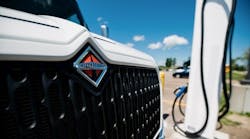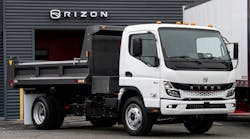Every trucking magazine I pick up these days has full-page advertisements featuring beautiful, sleek tractors, but the manufacturers of these trucks are not focusing on chrome, speed or power. Nope, instead they’re focusing on the aerodynamics of their new product offerings.
And while aerodynamic drag is just one of the things that consume fuel, truck builders have recognized its importance and for some time now have been working to design trucks that are more aerodynamic. Every one of them has models styled to reduce aerodynamic drag and they continue to tinker with truck design to get even more improvements.
Here are just two examples of many from last year:
- Volvo announced enhancements to the bumper, chassis and roof fairing on model year 2016 VN series highway tractors. According to a Volvo press release, these enhancements will “reduce air turbulence across the vehicle exterior and improve air flow under the truck, around the tires and the trailer gap.”
- Navistar announced a new fuel efficiency package for the International ProStar, called the ProStar ES (efficiency specification) that it says “was developed to have the lowest wind average drag coefficient in the industry.”
This is good news because any improvement to tractor aerodynamics boosts freight efficiency. A subtle improvement to sleeper tractors occurring over the past few years, is at their back. Long cab extenders, now with rubber pieces to avoid damage in tight turns and more recently air fairings across the top rear of the cab have significantly reduced the drag created in the tractor to trailer gap. Match that with managing the tractor trailer gap with moveable 5th wheels and or a gap reducer and this area is no longer much of a drag on fuel efficiency.
And there’s more to come….as future gains in reducing tractor-trailer aerodynamic drag will come with the trailer. The boxy shape of most highway trailers, great for hauling a lot of freight, but they do present a clear challenge when it comes to reducing aero drag.
The EPA lists about a dozen and a half different side fairings that meet its testing requirements to be SmartWay verified. So if you’re not using skirts on your trailers, you might want to consider them. In my travels, I’m also seeing more trailers with boat tails. These devices work by minimizing the low-pressure vacuum that develops at the rear of the trailer as the truck goes down the road.
Opportunities exist, to lower fuel consumption by between 3% and as much as 10% using these available trailer technologies. And as we determined in a 2013 study, these components are very reliable, durable and perform to improve efficiency. When truck makers and component suppliers started addressing the aerodynamic drag challenge there was the possibility for significant gains. Today reduction of aerodynamic drag is more incremental. But little things mean a lot and 1% here and 4% there can add up to some real improvements.


